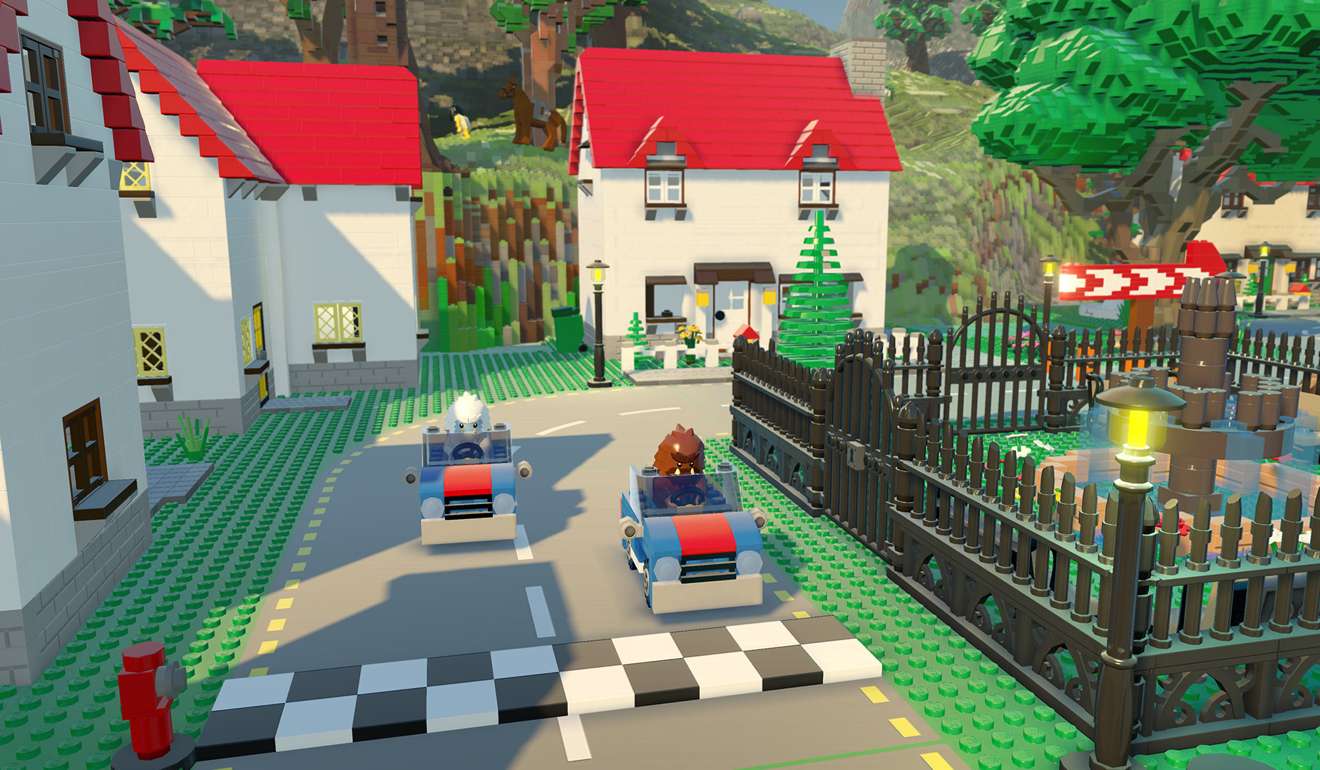
Game review: Lego Worlds’ free-form building is good fun with huge promise, if a bit fiddly
The Lego games haven’t replicated the beloved blocks’ defining characteristic: unfettered construction. Until now. But despite its vast potential, Lego Worlds has just a few too many niggles to be an essential purchase
Lego Worlds
Warner Bros
3/5 stars
Glance down the intricate family tree that connects the myriad successful Lego video games, and something striking is missing throughout the lineage. Most of those releases have made only cursory attempts at replicating the defining characteristic of the real-world toy: unconstrained construction.
Aside from curio releases such as the 1998 PC title Lego Creator, games based on the beloved bricks tend to allude to creativity, rather than offering free-form building in an unbridled form.

And yet Minecraft – with 120 million sales and counting – has proved there is huge potential in the idea of open-ended construction-focused games. Indeed, as Mojang’s creation evolved from a darling of the indie community to an international merchandising empire, it was comparisons with Lego that made the game easy to understand for players and, importantly, their parents.
The newly released Lego Worlds marks a long-expected effort to reclaim some of the territory currently held by Minecraft. Perhaps wisely, however, it offers a spin on construction as distinct from that game as the broader genre allows.
For starters, you won’t have the ability to build your own landscapes until you’ve completed several hours of play. Lego Worlds (for PC, PlayStation 4, Xbox One and Switch) is at it simplest a third-person adventure game built from digital bricks, and packed with quests, collectables and plenty to explore.
The fundamental structure will be familiar to anybody who has played a Lego game before. But the difference is that throughout its campaign, this game gradually evolves towards being a creative experience, as various quests mould the player into a capable builder. And it is here that Lego Worlds gets a lot right.
The framing of the narrative is much looser and more minimal than previous Lego titles. A spaceman has crash-landed on the planet and wants to become a master builder. Gameplay is also much more open-ended. If there is an overall goal, it is simply to collect everything and play with everything. And after a few fleeting levels, new stages are randomly generated, rather than being meticulously designed. They remain full of objectives, tasks and hidden items, and are clearly not entirely random; for one, such stages can always be navigated and make sense as game spaces.
From its opening moments, then, Lego Worlds is a game that pays little mind to rigid structuring. It’s a perfect design choice for a development team clearly trying to explore what player freedom can mean. In hopping from world to world earning and uncovering the gold bricks that serve as a currency for opening up the game and its character abilities, Lego Worlds introduces a number of tools that, on the whole, surmount the game’s most significant challenge: it must offer a workable creative tool set that can be harnessed using a game controller instead of the more practical keyboard and mouse.
Tools are introduced one by one as means to solve puzzles. Quickly other abilities are introduced: copy and paste structures, raise and flatten land and scenery, and build brick-by-brick, along with a bounty of other options.
The best means to interact with the bricks in Lego Worlds is the Discover Tool. A 3D scanner that looks like a ray gun, it can be used to capture hundreds of bricks, characters, buildings, vehicles and prefabricated scenery from any environment. Capturing an item grants you the instant ability to place it in-game with remarkable freedom. Sometimes that will deliver a means to solve puzzles, or simply an opportunity to replicate a steed on which to journey over a blocky landmass. But really, the Discover Tool is establishing a library of assets from which you can spin your own environments.
Gradually, Lego Worlds relinquishes control, and over time free-form building and playing the game start to become one and the same. It’s a masterful way to guide players towards Lego’s vision of a creative experience.
It’s just a shame there are a few too many flaws amid the foundation of that vision. Firstly, there’s the curious decision to keep the truly free building mode until the player has earned 100 gold bricks – a tremendous undertaking that will inhibit the emergence of a content-sharing community. And while placing bricks and repainting landscapes with a gamepad is workable, away from the direct manipulation of digital Lego elements Worlds feels unnecessarily complex and fiddly throughout.
In spite of all that, Lego Worlds can be terrific fun, and its potential is vast. It is visually splendid, right down to capturing the various textures that real Lego bricks variously sport.
With just a couple of updates, Lego Worlds could leap from a captivating proposition to an essential purchase. But for now, the loose framing that allows Lego Worlds and its players to be free from stifling game design conventions has also made the experience sometimes ungainly and directionless, leaving its protagonists stranded in a world that is as full of confusion as it is ideas and potential.

